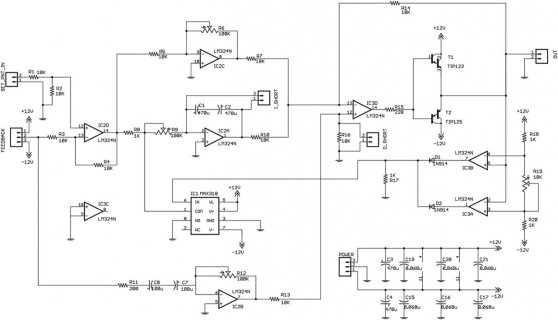Alright I finally got one channel breadboarded and tuned the PID with what I had available on hand and it’s pretty good (quick and accurate). It’s quite a bit of components per channel, but I personally feel it’s smoother than PWM.
Here’s what the breadboard looks like:
View attachment 20417
Quick video of it action, there is no motor noise just noise from the bushings being worn out in this fader:
It can still be a tiny bit faster, I only have a 20v power supply on my test bench, this is also without having the correct op amp since this one can't produce close to its rails so moving the fader up is ever so slightly slower than going down right now. To interface this analog circuitry with a Teensy you would have to use a DAC in place of the rotary pot which I plan on using 2 AD5592R DAC/ADCs per 8 channels for a theoretical 12 bit resolution. This uses very little pins so if you wanted to you can control a lot of faders and other peripherals with just one Teensy.
I'll make a schematic of this likely tomorrow, this breadboard doesn't currently have the circuits for the low pass filters and buffers connected that would be on this in a final product.
Very interesting development! It does really seem to run smoother than the pwm drive. Two questions:
What would be required to create a setup for 16 or even 32 faders ?
How do you tune the PID parameters for the faders?












